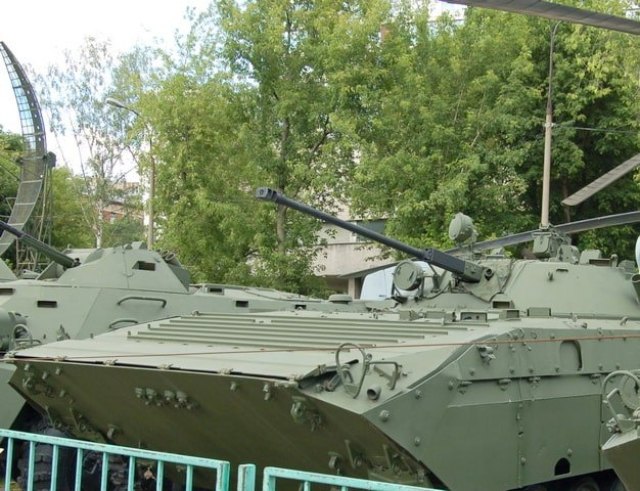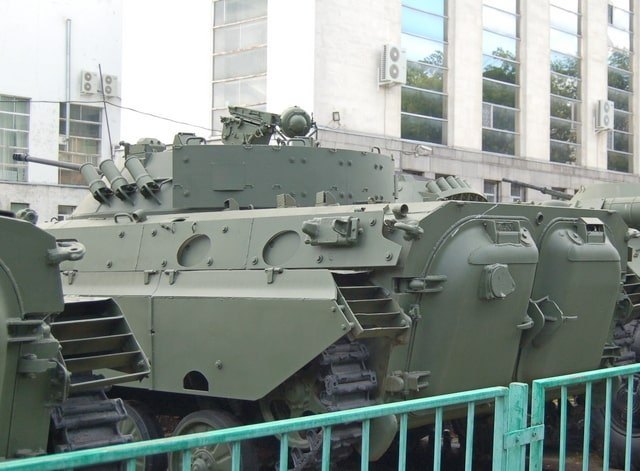
Image Source: Photo: CMVSRF
The first experience of combat use of Soviet combat vehicles in infantry in Afghanistan only confirmed what has long been known: our IFVs, like their foreign peers, have insufficient survivability on the battlefield.
And we must pay tribute to the domestic developers who created the Afghan versions of the BMP-1 and BMP-2 in a short time. They were adopted in 1982.
They were equipped with additional steel screens on the sides of the hull, bolted at some distance from the main armor, steel bulwarks covering the undercarriage, as well as an armored plate mounted under the driver's and senior gunner's workplaces. Part of the "twos" had enhanced protection of the rear part of the tower. The vehicles were designated BMP-1D and BMP-2D.

Image Source: Photo: CMVSRF
As a result of these improvements, the first began to weigh 14, and the second 14.5 tons. Mobility characteristics deteriorated somewhat, instead of 65, they now "squeezed out" 60 km/h and lost the ability to force water obstacles by swimming.
After the withdrawal of our troops from Afghanistan, the BMP-1D became a rarity, although recently one of the samples was shown at a military parade in Kyrgyzstan. More BMP-2ds have been preserved, they still continue to serve in the armies of Kyrgyzstan, Tajikistan, Turkmenistan, and Uzbekistan.
